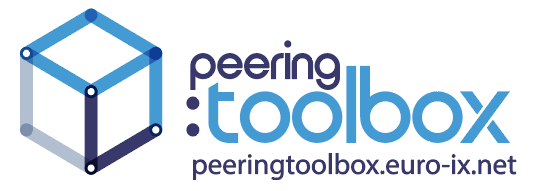This is an old revision of the document!
Table of Contents
The Importance of Peering
In the previous section, we learned how Network Operators fit into the global Internet ecosystem.
We also learned that they can peer with other networks, or buy transit from other networks, or both.
Operators peer with each other to:
- reduce costs
- reduce latency
- improve service quality
- access to content
- have “unlimited” bandwidth
- have direct relationships with other operators
Costs
The commercial part of the Internet is highly competitive with many network operators vying to provide the highest quality service to their end users at the lowest possible cost.
Apart from staff and equipment costs, the other significant cost of providing Internet access is to actually obtain that access to the whole of the Internet.
The simplest way of getting access to the whole Internet is to pay someone else to do it for you. That's a typical transit service that a new network operator would buy. But it is expensive, and gets more so as traffic levels increase. This model was common in the early years of the Internet, up until the early 2000s, but in recent years, there as been a sea change as network operators work as hard as they can to establish as much peering as possible.
Peering has no traffic charges, and so the more peering an operator can achieve, the lower the cost of traffic charges paid for transit. This reduction in operating expenses (OpEx) means better value Internet access for customers, or more financial ability to invest in newer/bigger/better infrastructure for the network operator, or hiring more technically skilled staff, or a combination of all of these.
Latency
Quite often the path from the network operator through their transit provider may be more indirect than is possible if the operator is connected directly to the content provider themselves. Several Internet applications are latency sensitive (online games, e-sports etc), and so a good provider will be looking for all opportunities to improve the latency their customers are experiencing.
Service Quality
Service Quality really defines the experience that end-users get from their service provider, not to be confused with QoS which is a packet prioritisation mechanism used for congested links.
If a network operator is in direct control of links to other operators, they then can control capacity, the service level agreement of the link, manage outages, manage connectivity issues with these other operators, and so on.
Relying solely on an upstream provider reduces the network operator's opportunity to give good service quality to their customers; their service quality can only be as good as that of their upstream provider.
Access to Content
Most of the major content providers (the so-called Hyperscale Content Providers) are present at many of the Internet Exchange Points and private peering facilities (datacentres) worldwide.
They have built their own content distribution networks (using their own fibre optic infrastructure rather than buying transit) and regional data centres, with their goal being to get their content to their “eyeballs” with the lowest latency, highest speed, and greatest reliability.
With these Hyperscale Content Providers present in so many places, network operators of all types work hard to ensure that they can peer directly with these content providers as close as they can to their own network infrastructure. Hauling data half way (or even a quarter of the way) around the world as was done in the 1990s and 2000s have now been replaced since the 2010s with operators turning up at Internet Exchange Points to interconnect with the Content Providers and Content Distribution Networks directly.
Given around 80% of traffic of any operator is sourced from these Hyperscale Content Providers, there is a overwhelming value proposition for all network operators who are able to peer (i.e. have their IP address space, AS number, own transit arrangements) to participate in peering at their nearest IXP or private interconnect facility.
Bandwidth
Quite often the capacity available from the network operator through their transit provider might have limitations that the network operator hasn't anticipated or, if there is a rapid increase in usage, hasn't purchased. This results in reduced throughput, congestion, and packet loss. This reflects poorly on the network operator's credentials as a quality service provider, and causes significant customer disappointment.
If the operator is peered directly with a content provider or other network operator, the capacity is usually provisioned over a direct cross-connect (fibre optic etc), with both entities being able to directly adjust capacity as required. Essentially a fibre cross-connect is only capacity limited by the equipment being used by each operator.
Relationships
Having a direct relationship with a content provider or other network operator, rather than via a third party (the upstream), can often mean that issues with content and service delivery being experienced by end-users can be more efficiently and effectively resolved, rather than having to work with the transit provider as an intermediary.

